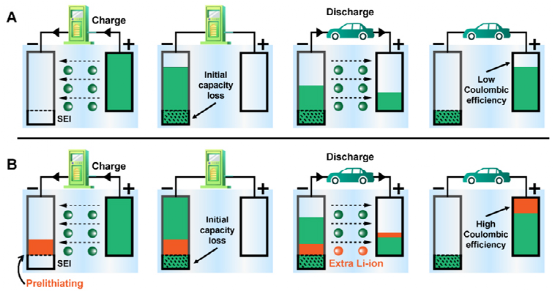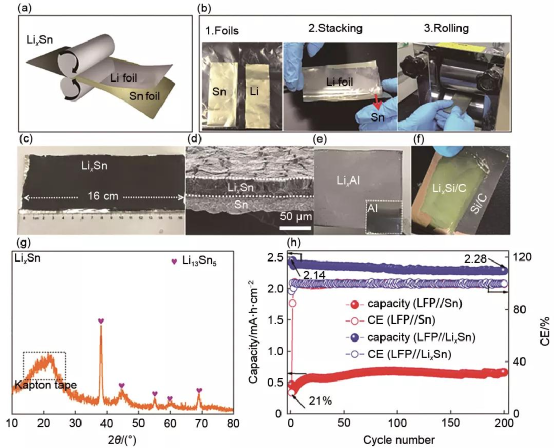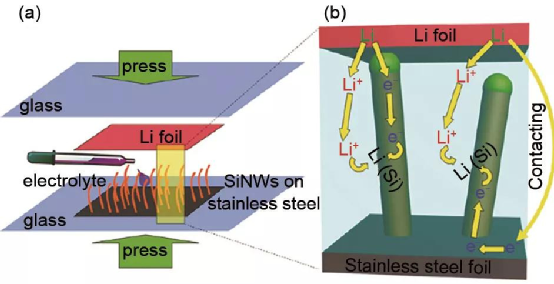Blog
Explore the Power of Lithium Innovation
Stay updated with the latest trends, technologies, and application insights in the world of lithium battery solutions
Search the whole station
Explore the Power of Lithium Innovation
Stay updated with the latest trends, technologies, and application insights in the world of lithium battery solutions
In recent years, the rapid growth of new energy vehicles has raised the bar for lithium-ion battery performance. Among all requirements, improving energy density has become the most urgent.

Currently, there are two main approaches to boost energy density:
Another important method is lithium replenishment technology, also known as pre-lithiation, which directly addresses lithium loss during initial cycling.
When a lithium-ion battery is first charged, the electrolyte decomposes on the anode surface (e.g., graphite), forming a Solid Electrolyte Interface (SEI). While necessary, this consumes a significant amount of lithium, lowering the initial cycle efficiency (ICE) and reducing overall capacity and energy density.
Further lithium loss occurs due to inactive anode particles and irreversible lithium deposition. Over time, these factors degrade performance.
Lithium replenishment technology solves this by pre-loading lithium into the battery before operation. By compensating for lithium losses, it improves ICE, extends cycle life, and enhances energy density.
For graphite anodes, irreversible capacity loss exceeds 6%. For high-capacity silicon and tin-alloy anodes, it can reach 10–30%. Pre-lithiation offsets these losses, unlocking their full potential.
Lithium replenishment falls into two categories:

This method introduces active lithium into the anode. Common approaches include:
Researchers have directly pressed lithium foil onto graphite or silicon anodes to restore lithium. For example, in 2019, Tongji University developed a roll-to-roll pre-lithiation process using Sn and lithium foils. The resulting LixSn material proved stable in air and retained 90% capacity after humidity exposure, making it suitable for LFP|Sn cells.
By using vacuum coating in roll-to-roll operations, large-scale uniform lithiation can be achieved. However, commercialization is still limited by cost and safety.
This involves reactions between lithium-rich agents (e.g., lithium powder, LiOH, molten lithium, or Li-organic composites) and the anode. FMC’s Stabilized Lithium Metal Powder (SLMP) is a leading example, applied through spraying or slurry coating.
Here, lithium foil contacts the anode in an electrolyte environment, triggering spontaneous lithium insertion. This method is useful for studying morphology-performance relationships.
Widely used in research, this method introduces metallic lithium with the anode and controls lithiation through electrochemical cycling. Huawei and Tesla hold patents in this area, while Xiaomi has already commercialized high-silicon pre-lithiation in mobile phone batteries.
Compared to the anode approach, cathode pre-lithiation is simpler, safer, and cheaper. Lithium-rich additives can be blended into the cathode slurry without altering existing manufacturing processes.
Negative electrode pre-lithiation, despite being well-studied, faces safety risks with metallic lithium and remains difficult to commercialize at scale. Positive electrode pre-lithiation offers better safety and process compatibility, but material challenges remain.
Future research must focus on:

Lithium replenishment technology is emerging as a key enabler for next-generation lithium-ion batteries, improving both energy density and cycle life. While challenges remain—particularly in material stability and manufacturing—ongoing research and patents from major players like Tesla, Huawei, CATL, and Xiaomi indicate strong momentum toward commercialization.
As the energy transition accelerates, lithium replenishment could become a cornerstone technology for advancing electric vehicles, consumer electronics, and energy storage systems.
Learn about golf cart battery types, from traditional lead-acid and AGM to lightweight lithium and custom options. Discover practical advice and customization tips to maximize your cart’s performance.
View detailsLearn how to wholesale prismatic lithium cells effectively. Discover the advantages, key considerations, and tips for sourcing high-quality prismatic cells for EVs, energy storage, and other applications.
View detailsCompare 18650 and 21700 lithium batteries in terms of capacity, safety, discharge power, and applications. Learn which battery is best for e-scooters, EVs, and other devices.
View detailsAfter building multiple off-grid and RC projects, I’ve found the 3S7P lithium battery pack offers the sweet spot between voltage stability and massive capacity — here’s how I use it.
View details
HelloPlease log in